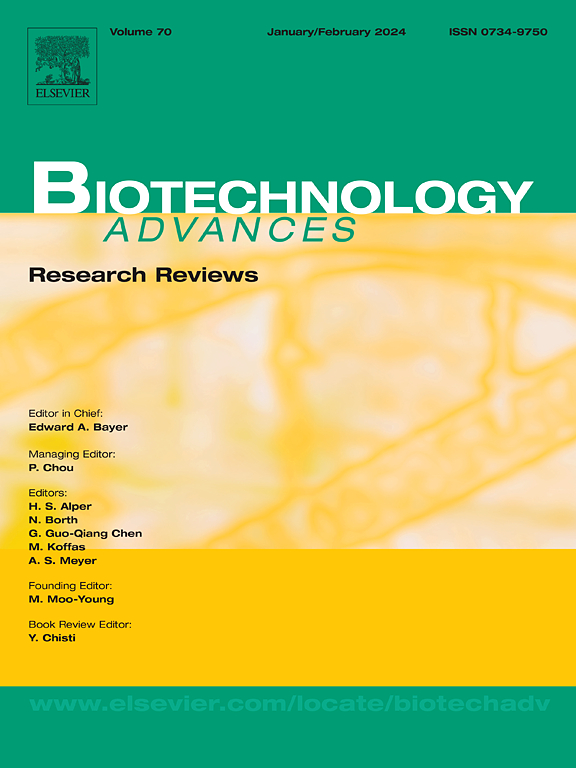Gene expression and protein abundance: Just how associated are these molecular traits?
IF 12.5
1区 工程技术
Q1 BIOTECHNOLOGY & APPLIED MICROBIOLOGY
引用次数: 0
Abstract
The ability to accurately predict the abundance of proteins from the expression of the corresponding genes has enormous potential for the advancement of biotechnological applications using metabolic engineering and synthetic biology approaches. Addressing this problem has been challenging because of the lag in methodological advances in quantifying protein abundances. Here, we reviewed and classified studies that investigated the relationship between gene expression and protein abundance in different experimental settings and cellular contexts. We focused on comparing and contrasting the findings based on different correlation-based measures, widely used with nominal or transformed transcriptomics and proteomics data. We also included studies that investigated and attempted to explain the observed correlations between gene expression and protein abundance by incorporating data on additional factors, such as translation rate, protein degradation, and post-transcriptional modifications, using various statistical and mechanistic modelling frameworks. Finally, we provided an overview of how the latest advances using data from single-cell analyses have contributed to addressing this pressing question. Our review offers a perspective about how the findings about the relationship between gene expression and protein abundance can propel biotechnological advances, particularly focusing on opportunities resulting from the availability of protein-constrained metabolic models and the complementary machine and deep learning models.
基因表达和蛋白质丰度:这些分子特征究竟有多大的关联?
从相应基因的表达中准确预测蛋白质丰度的能力对于利用代谢工程和合成生物学方法推进生物技术应用具有巨大的潜力。由于量化蛋白质丰度的方法进展滞后,解决这个问题一直具有挑战性。在这里,我们回顾并分类了在不同实验环境和细胞环境下研究基因表达和蛋白质丰度之间关系的研究。我们的重点是比较和对比基于不同相关性的测量结果,广泛用于名义或转化转录组学和蛋白质组学数据。我们还纳入了一些研究,这些研究试图通过结合其他因素(如翻译率、蛋白质降解和转录后修饰)的数据来解释观察到的基因表达与蛋白质丰度之间的相关性,这些研究使用了各种统计和机制建模框架。最后,我们概述了利用单细胞分析数据的最新进展如何有助于解决这一紧迫问题。我们的综述提供了一个关于基因表达和蛋白质丰度之间关系的发现如何推动生物技术进步的视角,特别是关注蛋白质受限代谢模型的可用性以及互补的机器和深度学习模型所带来的机会。
本文章由计算机程序翻译,如有差异,请以英文原文为准。
求助全文
约1分钟内获得全文
求助全文
来源期刊

Biotechnology advances
工程技术-生物工程与应用微生物
CiteScore
25.50
自引率
2.50%
发文量
167
审稿时长
37 days
期刊介绍:
Biotechnology Advances is a comprehensive review journal that covers all aspects of the multidisciplinary field of biotechnology. The journal focuses on biotechnology principles and their applications in various industries, agriculture, medicine, environmental concerns, and regulatory issues. It publishes authoritative articles that highlight current developments and future trends in the field of biotechnology. The journal invites submissions of manuscripts that are relevant and appropriate. It targets a wide audience, including scientists, engineers, students, instructors, researchers, practitioners, managers, governments, and other stakeholders in the field. Additionally, special issues are published based on selected presentations from recent relevant conferences in collaboration with the organizations hosting those conferences.
 求助内容:
求助内容: 应助结果提醒方式:
应助结果提醒方式:


